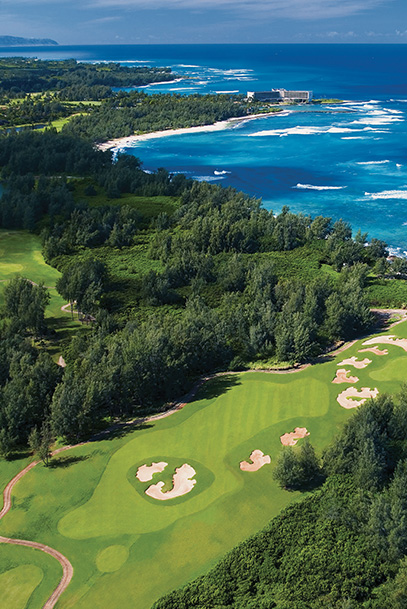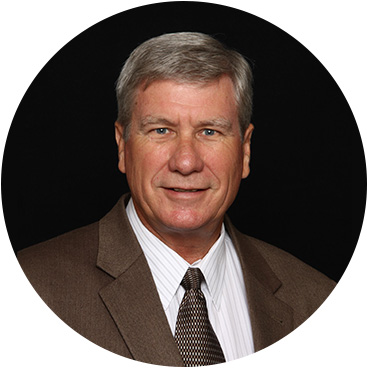Welcome to the Seashore Paspalum Website Powered by Team UGA®
The purpose of this website is to create a comprehensive home for information, research, and maintenance suggestions for seashore paspalum turfgrass. Administered by Team UGA at The University of Georgia—powered by the expertise of dedicated scientists working in the fields of agronomy, entomology, weed science, plant physiology, plant pathology and molecular genetics—it is our intention to provide you with the information you need to succeed in specifying, planting, utilizing and managing seashore paspalum on golf courses, sports fields


Seashore Paspalum
The Future of Turfgrass
Seashore paspalum (Paspalum vaginatum) is a warm-season turfgrass that is particularly well adapted to moist and salt-affected areas common in coastal regions. It tolerates sandy and infertile soils, high salt concentrations, and occasional inundation by seawater, as well as waterlogged conditions. This grass also has many morphological characteristics that make it desirable as a turfgrass.
Seashore Paspalum produces both stolons and rhizomes, has an intermediate to fine leaf texture, an attractive bright green color, good density, and good tolerance to low mowing. Seashore paspalum is considered to be the most salt-tolerant warm-season turfgrass species and also holds great promise for reclamation and soil stabilization of unmanaged salt-affected sites. One of its most unusual attributes is that salt may be used to kill weeds in this grass. For these and many more reasons, we believe that Seashore Paspalum is the future of turfgrass.
The Future of Turfgrass
Why
Seashore Paspalum Should Be Used
Seashore paspalum should be considered for its many benefits including:
- Extreme beauty
- High salt tolerance
- Adaptability to soil pH and soil types
- Low water use once established
- Low nitrogen requirements
- Adaptability to water quality, from salty to potable
- Insect resistance (chinch bugs)
- Wear tolerance
- Quick recovery from damage such as divots or cleat tears
- Tolerates a wide range of mowing heights
- Tolerance to low light conditions
- Tolerates the use of salt as herbicide
Where
Seashore Paspalum May Be Used
- Golf Courses
- Sports Fields
- High-End Lawns
Although seashore paspalum is well-adapted to moist, salt-affected coastal areas, the grass may be planted in nearly any warm-season climate—it has been planted in desert conditions in Egypt and the Middle East; in humid, tropical conditions in SE Asia, Florida and Hawaii; and throughout the warm-season regions of the United States from California to South Carolina. While known for its salt tolerance, salt-affected sites are not required.
Seashore paspalum produces a dense, lush canopy ideal for warm-season golf courses, especially fairways, as its upright nature makes a ball sit up as if on a tee. Some varieties, such as SeaStar, are also well-suited for putting greens use. Seashore paspalum also creates wear-tolerant sports fields because the grass grows aggressively from rhizomes and stolons, making it quick to heal from sports-related wear. While some maintenance characteristics of the grass may not make it ideal for common home lawn use, professionally managed lawns at high-end homes, and especially seaside event lawns at resorts, do particularly well with seashore paspalum grass.
Sample List of Golf Courses Grassed with UGA Seashore Paspalum Varieties:
TPC Treviso Bay, Naples, Florida • Emirates Golf Club, Dubai, United Arab Emirates Mission Hills, Word Cup Course, Shenzhen, China • Turtle Bay Resort, O’ahu, Hawaii Vero Beach Country Club, Vero Beach, Florida • Sahara Golf Club, Kuwait City, Kuwait Punta Cana Resort, Dominican Republic • Ritz Carlton Golf Club, Jupiter, Florida Hilton Resort Golf Course, Cancun, Mexico • Belfair Plantation, Hilton Head, South Carolina The Ocean Course, Kiawah Island Golf Resort, South Carolina • Shek O, Hong Kong Amata Spring Country Club, Bangkok, Thailand • Golf de Residence, Tunis, Tunisia Tam Dao Golf Course, Viet Nam • The Plantation Course at Edisto, Edisto Island, South Carolina

Challenges of
Seashore Paspalum
There is no silver bullet, no perfect grass. As versatile as seashore paspalum is, its limitations should be understood. While seashore paspalum may be mowed with a rotary mower, it is prone to scalping and performs best when mowed with a reel mower. This grass grows extremely well in humid climates, but by nature of that climate, paspalum can be prone to diseases that also thrive in moist environs. Chemical treatments are available on the market to treat those diseases.
Perhaps the biggest obstacle to successful seashore paspalum use is removing bermudagrass. No herbicide currently exists that allows 100% control of bermudagrass from seashore paspalum. Therefore, sites previously planted with bermudagrass will invariably have some bermudagrass contamination. While suppression is possible, complete control is extremely difficult. The good news here, though, is that while bermudagrass holds dew in the morning, the leafy nature of paspalum does not. Therefore, bermudagrass contamination is usually only noticeable in the early morning when dew is on the plant.
History of University of Georgia
Seashore Paspalum Breeding Program
The UGA seashore paspalum breeding program started more than two decades ago in 1993 at the University of Georgia campus in Griffin. Dr. Paul Raymer assumed the leadership role of the program in 2003. Dr. Raymer leads Team UGA, an interdisciplinary program that brings together the full resources of UGA research. Experts in the fields of entomology, plant physiology, weed science, stress physiology, plant pathology
The seashore paspalum breeding program at UGA has released four of the most widely utilized seashore paspalum cultivars: SeaIsle 1, SeaIsle 2000, SeaIsle Supreme and SeaStar seashore

Meet Dr. Paul Raymer
Recognized as the preeminent seashore paspalum turfgrass breeder working today, Dr. Paul Raymer has made substantial contributions to the field of paspalum research. Widely published, and responsible for the release of two of the four UGA varieties on the market, Dr. Raymer leads the Team UGA breeding and genetics program from the UGA Griffin Campus. The primary emphasis of the program is placed on the development of improved cultivars of seashore paspalum for a range of fine-turf and environmental applications. Breeding goals are to develop cultivars for high-stress environments with improved salt tolerance, drought tolerance, disease resistance, and insect resistance.
Research areas include breeding methodology, herbicide resistance systems, genetics of salt tolerance and disease resistance traits, and development of molecular markers for important traits such as salt tolerance. This program has state and federal support and is also funded by external grants from the USGA, USDA, the University, and industry. Dr. Raymer received his Ph.D. from the University of Illinois. At Griffin, he teaches an undergraduate course entitled Undergraduate Research Methods and a graduate level course entitled Plant Breeding Practicum. Dr. Raymer also trains and directs graduate students in turfgrass breeding and genetics research.

